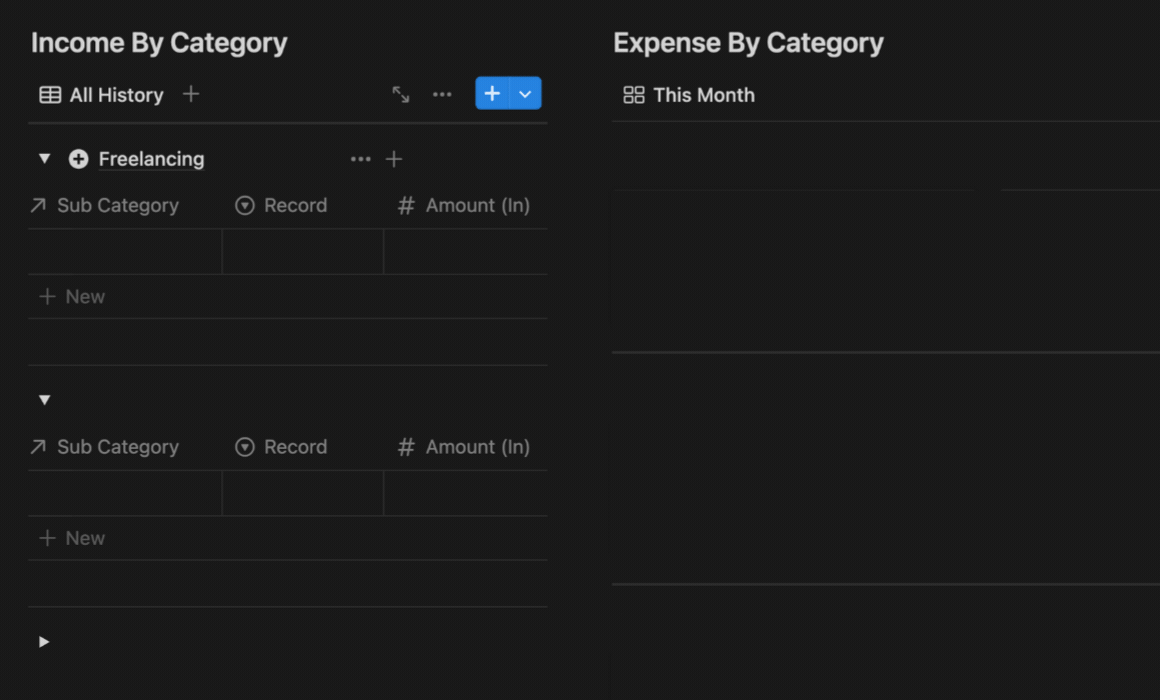How I Automate My Personal Finance Management
Finally putting all my personal finances in one place.
This is a special issue because I've been exploring new topics beyond our usual themes like Product Builder Lessons, Minimum Viable Tests, and NoCode MVP Methods.
As entrepreneurs, digital productivity is important for both our personal and professional lives.
Today, I’ll share some personal tips on optimizing personal finance management using Notion. I’ll also highlight some cool features I’ve created in my Notion template to organize my finances better.
The Problem
As a product person, I love solving personal problems using the product building mindset:
I often found myself scrambling through Google Sheets, Dropbox, and Apple Notes to gather all the data I needed about my expenses, income, statements, etc.
Everything was all over the place across different digital tools. It was a chaotic mess and gave me a huge headache:
While I tracked some expenses in Google Sheets, I constantly had to learn new formulas whenever I needed to analyze my finances in detail.
I often forget to set up reminders and hate forgetting to cancel unwanted subscriptions, especially those that require credit cards for free trials.
My receipts were stored haphazardly — some digitally in Dropbox, others downloaded to my desktop folder — and I struggled to identify which ones were tax-deductible.
I had to manually generate financial reports using my spreadsheet tracker to assess my overall financial health.
The Solution
I needed a better personal finance system that wouldn’t require me to sign up for multiple software or services.
While I appreciated the custom formulas in Google Sheets or Excel, Notion allows me to do much more, including creating beautiful design layouts, syncing databases, customizing formulas, and automating calculations.
Ideally, this Notion finance system should help me handle everyday financial management:
Calculating a monthly budget and showing available budget for different spending categories.
Tracking expenses, income sources, transfers in one place.
Tracking upcoming subscription bills and their due dates.
Monitoring my investments to track gains and losses.
Monitoring debt balances and payment schedules.
An accessible finance dashboard that displays financial summaries.
1. Multi-step budgeting
This budget tracker helps me allocate how much I want to save, invest, spend, and pay off each month.
I can break it down further by budgeting for subcategories. For example, out of my 25% spending budget on Needs, I can allocate 5% to Transportation and 10% to Utilities.
My budget tracker can also displays a red progress bar if I exceed the budget; and a green one if I am under budget.
2. Automated financial reports
Each month, I can easily review my total incomes, expenses, and cash flow.
My financial reports also display progress bars to show how well I’m doing financially month by month.
Searchability is also important for managing my finances.
Therefore, I’ve created custom filters in Notion to help me easily trace back financial progress from previous months and years.
3. Tracking expenses and incomes
Income Tracker: Whenever I record an income transaction, I categorize the income sources — whether it’s freelance work, online business, rental income or dividends.
Expense Tracker: This tracker organizes all my expense records by category and subcategory, helping me identify where I can cut back and save money effectively.
Receipt Tracker: Each time I add an expense transaction, I can upload a PDF receipt or link to an external URL containing the file, and indicate whether it’s tax deductible.
4. Monitoring subscriptions
I made a Notion tracker to keep track of all of my personal and business subscriptions like Netflix, hosting providers, design software, etc.
It automatically counts down to the next billing date and indicates the number of days until my payment.
I can also pin upcoming reminders on my Notion dashboard to highlight payments due within the next 30 or 60 days.
5. Investment tracker
For the investment tracker, I use it to monitor all my investments in one place.
This system allows me to categorize investment assets such as stocks, cryptocurrencies, index funds, mutual funds, and real estate.
I can easily update the current market value, and it will automatically calculate the percentage of gains and losses across all investment assets.
6. Real-time account balance tracker
I also created an Account Manager to monitor all my bank accounts and track transfer activities between account A and account B.
After each transfer, such as from Savings to Investment Banks, the balances in my Account Manager update automatically in real-time.
This means I always have the most accurate and up-to-date information about my assets at my fingertips without having to manually recalculate everything.
This account balance tracker also integrates with the net worth calculation database.
For example, whenever bank balances change, my Notion gallery will automatically update my total assets, liabilities, and net worth.
7. Loan tracker & debt reduction progress
I created a loan tracker to manage my mortgages and auto loans.
I can categorize them based on interest rates, allowing me to prioritize payments and save money on interest over time.
One of the key features I added is an auto-countdown, which shows exactly when and how much more I need to pay off my debts.
This feature is incredibly motivating because I can watch the days and amounts decrease in real-time as I make payments.
It helps me stay focused on reducing my debt and achieving financial freedom faster.
8. Financial goal tracker
Setting and achieving financial goals is essential for mastering personal finances.
I can set up my annual financial targets, such as how much I want to earn, save, invest, and pay off each year.
The tracker will automatically calculate how much I am currently achieving my goals, and a progress bar will show how close I am to reaching my financial targets.
Get The Notion Template
If you’re interested in my Notion finance dashboard template, you can find more information on the website:











